Fault Line Capable of Producing Major Earthquakes
Posted: Jan 31, 2011 5:38 PM CSThttp://www.katv.com/Global/story.asp?S=13942541
Geologists working with the University of Arkansas at Little Rock have determined that a previously undetected fault line capable of producing large magnitude earthquakes has been found in an area ranging from south of Forrest City to Helena-West Helena.
According to Dr. Haydar Al-Shukri, with the Applied Science Department at UALR, geologists have determined that the fault line does exist. They are currently working to determine how often earthquakes along the fault have occurred in the past. Dr.Al-Shukri said officials with the United States Geological Survey were called in to study the area that travels through Lee County, near Marianna, and has produced magnitude seven earthquakes and greater in the area. Earthquakes with a magnitude of 7.0 to 7.9 on the Richter scale are listed as major earthquakes that can cause serious damage over large areas.
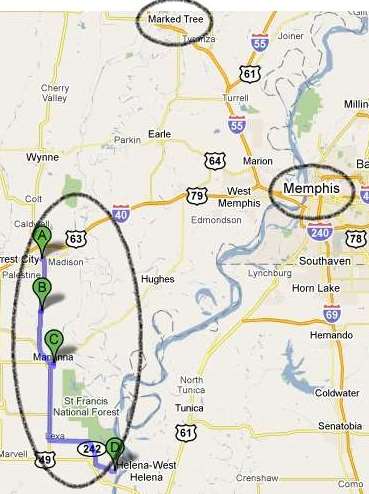 "We have determined that there is a fault line in Eastern Arkansas that is not associated with the New Madrid Fault Line. The U.S. Geological Survey came in and studied the area that we had indicated as possible for a fault line and used seismic reflection equipment to research the area based on our research that we presented to them," said Al-Shukri.
"We have determined that there is a fault line in Eastern Arkansas that is not associated with the New Madrid Fault Line. The U.S. Geological Survey came in and studied the area that we had indicated as possible for a fault line and used seismic reflection equipment to research the area based on our research that we presented to them," said Al-Shukri.
"The technology they used is similar to equipment that is used to look for oil. They were able to look several hundred meters deep under the surface and confirm that there is an active fault line in that area," said Al-Shukri.
The seismic reflection method works by bouncing sound waves off boundaries between different types of rock.
MAP AT RIGHT: Marked Tree (top of map) is the southernmost part of New Madrid Fault. Forrest City (point A) is 45 miles west of Memphis. Markers A-D roughly show the location of the Marianna fault. Tunica, Mississippi on opposite side of the Mississippi River, is home for several gambling casinos.
"The main thing that they were able to determine is that not only is there a fault line present, but that it is still an active fault line and has, over several thousand years, produced major earthquakes of magnitude 7 and greater on more than one occasion," he said.
The most recent reported instance of an earthquake along the fault line was in August of 2008 when a magnitude 2.6 earthquake with an epicenter about eight miles east of Haynes and 10 miles northeast of Marianna occurred. On the same day, a second earthquake occurred five miles southwest of Cooter, Mo., and five miles north-northeast of Blytheville with a 2.7 magnitude earthquake along the New Madrid Fault Line. Both quakes occurred within an hour of each other with the Haynes earthquake at 10:36 p.m., and the second earthquake occurring at 11:35 p.m.
Al-Shukri said researchers must now continue working to determine how often activity along the fault line happens and how severe that activity is.
"Now that we have determined for certain that there is a fault line in Eastern Arkansas, we must now continue our research to determine what activity took place in the past, how often that activity took place and how severe it has been so that we can attempt to create a time line which could give us an indication for predicting a timeframe for when future activity could be expected," he said.
"One way to determine that is through the creation of a seismic risk assessment. Once that is complete, we will be able to determine what changes are needed as far as the design of structures in the area in order to create a safer environment for residents there. We definitely know that earthquakes higher than seven have happened in Eastern Arkansas; we just don't know how often they occurred at this point."
While research continues into the Lee County fault line, Al-Shukri said researchers are also studying the impact of natural gas drilling across the state with an increase in earthquakes in Central Arkansas.
"Our work in that area is also continuing. We're looking into the recent outbreak of earthquakes in Central Arkansas and trying to determine if there is any correlation between the beginning of natural gas drilling in the area to the increase in earthquakes. Since this started there have been close to 1,000 earthquakes in that area, all of them minor and around 4.0 in magnitude and below," he said.
According to Al-Shukri, the first study researched the impact of production wells and found that there was no correlation between the production wells and the earthquakes. The second study focused on injection wells which introduce the water mixed with chemicals from the production wells deep underground into porous rock formations.
"We are now looking at the impact that these injection wells may have. In producing the natural gas, water and chemicals are used in the production wells and that material has to be disposed of. There are basically two ways of doing that. The first is to get rid of the water and chemicals by treating them in surface ponds or it can be done by injecting that material back into the earth much deeper than the depth of the production wells," said Al-Shukri. "It is very well known that these induction wells have produced an increase in earthquake activity in areas near them. Induction seismicity has been associated with minor earthquakes around the world in areas where there has been drilling for natural gas or in areas where very large dams have been built because of the filling of the large reservoirs and the impact of all of the associated pressure. There have also been increases in activity where there are large production oil fields and in other areas where mining has been prevelant and induction wells are used."
He said researchers have not confirmed that the induction wells caused the increase in earthquakes in the area. He said that research may take two to three years.
"Daytona Beach" in Ark. just south of NMSZ
created 5,000 and 7,000 years ago near Marianna Ark. A pipeline or two is near. Click image for PDF slideshow
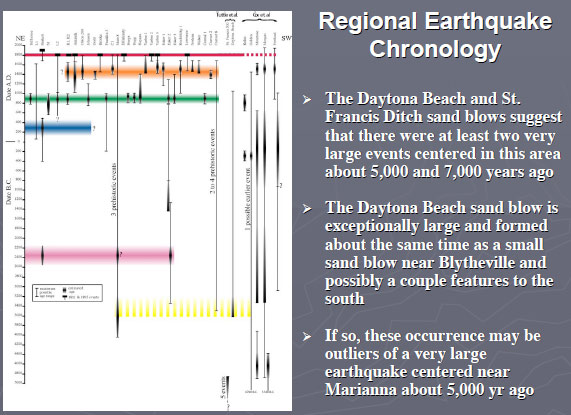
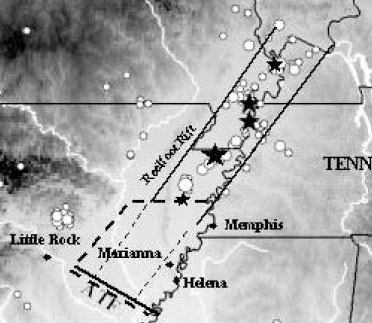
The "Daytona Beach" sandblow is 6 mi SW of Marianna, Ark., between Little Rock and Memphis, closer to Memphis. The map above
shows it in line with New Madrid Fault. Al-Shukri says the Marianna area fault is not part of the New Madrid Seismic Zone. more
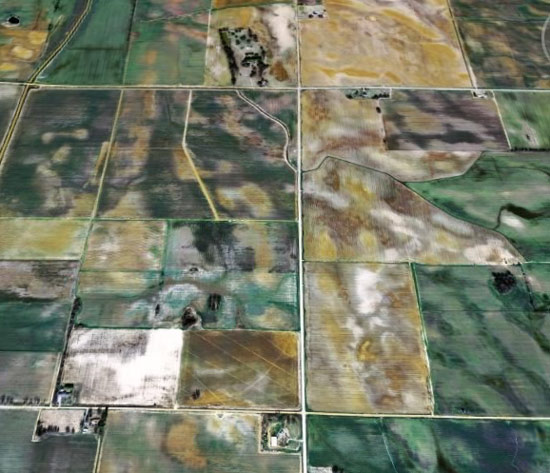
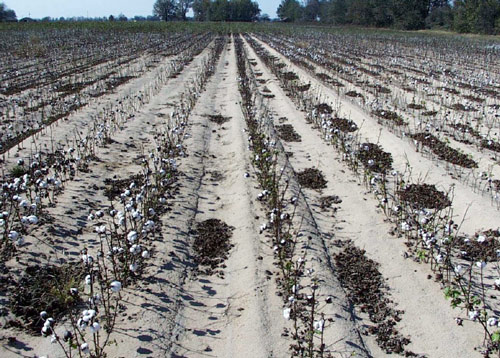
The white-looking soil is white sand from a large sandblow. "Acres of cotton fields cover the fault west of Marianna, Ark., between Little Rock and Memphis, but stretches of fine sand mixed with fertile soil gave away the fault's location. The fault, likely created in the last 5,000 years, sparked at least one magnitude 7 earthquake in its history.
"Haydar Al-Shukri, the director of the Arkansas Earthquake Center at the University of Arkansas at Little Rock, said the fault is separate from the New Madrid fault. "This is a very, very dangerous (area) at risk of earthquake," he said.
"A gas pipeline crossed the newly discovered fault. Carl Weimer, of the Pipeline Safety Trust in Bellingham, Wash., said companies with lines running through earthquake-prone Southern California have extra safety features including "more valves and different types of valves in case something happens and the pipeline can be shut off quicker." -- AP 1/22/09
"The U.S. Department of Transportation's Office of Pipeline Safety did not immediately respond." more The first and second graphics above are from a 2006 report from Al Shukri and Martitia Tuttle.